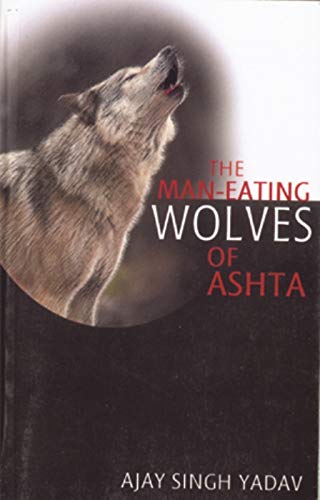How The First Took Place
What follows is pure conjecture or surmise, or you can call it intuition if you like, but I am willing to stake my reputation on it. I am willing to stake my reputation on It. I am talking about the first kill of the man eater of Ashta, an event that passed away into oblivion, without leaving behind any witness or documentary record. It is my contention that Govind, the shepherd boy, whose ruined hut was described earlier, was the first victim of the man eater of Ashta. What I offer below is a reconstruction, based on my imagination, yet I am as sure of the truth of this, as I am of anything.
It was a winter morning that promised to be fair, when Govind the shepherd boy, set out to graze his animals on the pastures to the south of his hut near the village of Amarpura. Govind was an orphan who had been brought up by his old grandmother, but a few years ago she had also died, leaving him alone with his animals. Not that Govind was particularly sorry, the old lady had become reuhmatic and was always losing her temper on the slightest pretext. Now he had not a soul in the world to call his own, and he rather enjoyed the freedom that this gave him. When other children went to school, he went to the jungle with his herd, and the days passed pleasantly in the company of the few cows and buffaloes that he owned and whom he really loved. While the animals grazed, or sat chewing the cud contentedly, Govind watched the butterflies and the dragon flies or the innumerable wild flowers that grew everywhere, daydreaming or playing his own self devised games.
He milked his cow and buffaloes himself, and sold the milk in the nearby village. The money that he got in return, he used for buying grain and other bare necessities of life for himself. He didn't really need much money, and often let the calves drink all the milk they desired, not milking the animals himself. On this particular day he had set out as usual, for the pastures that stand next to the jungle. It is true that they were quite far from his hut, but then the grazing was good there, because the other village animals were not brought to graze so far afield. It must have been close to mid day when suddenly, the sun was obscured by dark clouds and a light rain started to fall. It didn't seem to bother the animals, but Govind sought shelter under a tamarind tree that grew at the edge of the jungle. It was then that he saw them; the wolves. Not one or two, but all four of them. He would have for his herd, or run out to them, but he was mesmerised by the eyes of the wolves, glaring, baleful eyes that transfixed him. Before he could shout, the entire pack was on him, snapping and tearing and it was all over for him within a few minutes. After killing Govind, the pack carried him away into the jungle, and as there were four hungry animals, who had probably not eaten for days, nothing was left of his remains to tell the tale.
This according to me is how the first kill of the man eaters of Ashta took place. It explains why the entire pack turned man eater, rather than just a single animal. It also explains the mysterious disappearance of Govind just before the first human kill of the man eater of Ashta was reported. I have of course no circumstantial evidence or evidence of any other kind to substantiate my claim. How then did I come about this story? My answer is that I seemed to see the whole chain of events in my mind's eye as I sat up for the wolf, close to Govind's ruined hut one evening, an incident that I have already narrated. Nor was it merely an accident that I dreamed this particular dream, when I sat up close to the hut. I do believe those who die violent deaths of the kind described above, leave behind a whole corpus of powerful feelings and unsatisfied longings, that hangs over a particular spot like an emanation, and affects those who are susceptible to these things. You may reject my explanation as fanciful and far fetched, but then it would be bard to come up with a better one.
This also brings me to the larger question of why, wolves turn man eaters. My theory is that do so because of the destruction of their habitat and the consequent scarcity of their natural prey. Unlike tigers and leopards, who, more often than not, turn man eaters due to injury or infirmity, wolves if my theory is right, close purely because as their natural habitat is destroyed they are brought more and more in contact with man, and thus lose their natural fear of him. As the scarcity of their natural prey follows in the wake of the destruction of their habitat, they tum more and more to attacking sheep, goats and other domestic animals. From this, it is but another short step to attacking man.
In India, wolves have been around form times immemorial, but now very few are left in the wild. Wolf sightings are getting increasing rare, and I should not be surprised if the animal becomes extinct in India, in a few decades. On the other hand, one hears of man eating wolves more frequently than heretofore. All this is further proof, if proof were needed, of the connection between dwindling habitat and increasing incidence of man eating wolves. If this cycle of destruction continues unabated, the day is not far off when our forests shall no longer resound with that most thrilling of jungle sounds, the eerie wailing of the wolf.






